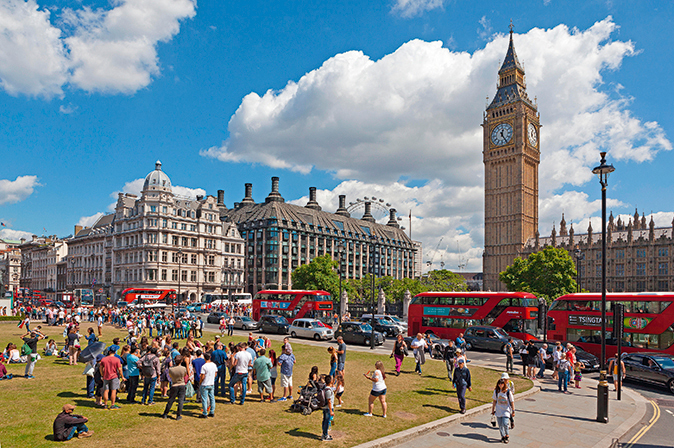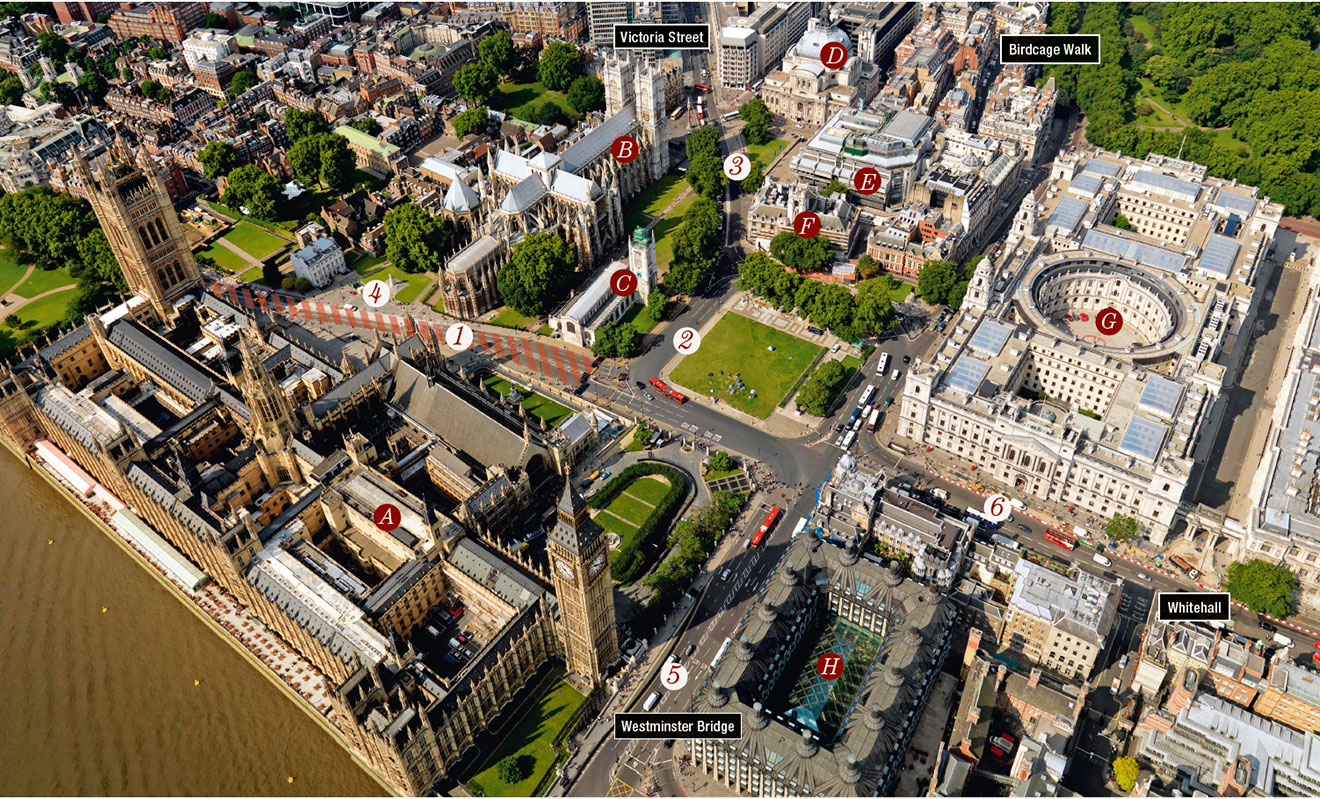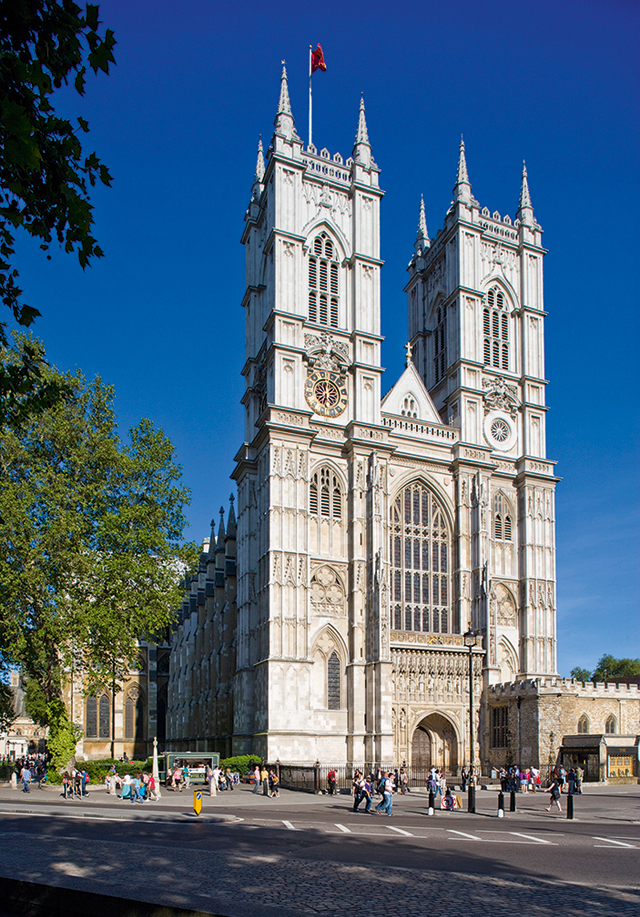With have a once-in-a-lifetime chance to revive Parliament Square. Clive Aslet suggests six changes that might lay the foundations for the transformation of this centrepiece of our national life.
It was Edward the Confessor who first concentrated English power at Westminster. But for years, the space at its heart – Parliament Square – has been an unsatisfactory urban muddle at the heart of London. Today, it’s a UNESCO World Heritage Site and Big Ben – or more properly the Elizabeth Tower – was the most-photographed building in Britain in 2017.
However, at present, it is not a space calculated to inspire, impress or delight. A visit involves jostling along crowded pavements and being corralled between unsightly security barriers. The wide roads are busy with fast-moving traffic; step back to admire the architecture and you risk being crushed by a bus or lorry.

But there is hope. The ongoing renovations to the Palace of Westminster mean that there will be a decade of disruption, but it also means that there’s an opportunity to make things better – just as the hugely successful reorganisation of Trafalgar Square in 2003 improved that space.
Clive Aslet has six suggestions for how Parliament Square can be changed into the gleaming London centrepiece that it should be.

A. Palace of Westminster B. Westminster Abbey C. St Margaret’s Church D. Methodist Hall E. Queen Elizabeth II Conference Centre F. Supreme Court G. Treasury H. Portcullis House (Click on the photo to open a larger version)
1. Close the road between the Palace of Westminster and Westminster Abbey
Many exciting possibilities will flow from the closure of Abingdon Street. For example, the railings and other street furniture designed by Charles Barry could be reinstated.
Advances in carbonfibre technology make it possible to have more elegantly proportioned crash barriers; these should be designed by a top architect, as happened when Quinlan Terry was commissioned to design the gates for Downing Street in the 1980s.
2. Open up the views of Westminster Abbey and St Margaret’s, Westminster
Westminster Abbey is one of Britain’s greatest and most historic buildings, yet the millions of people who visit it each year are forced to use crowded pavements that hardly allow a chance to stop and properly view its riches. If, as predicted, Abingdon Street closes, the south side of Parliament Square can be linked to the abbey grounds.

Westminster Abbey
3. Enlarge the square in front of Westminster Abbey – even if it means demolishing the conference centre
Victoria Street enters Broad Sanctuary at an angle and the space in front of the abbey, shared by taxis, delivery vehicles and pedestrians, is formless and unattractive. On the other side of the street, the forecourt of the Queen Elizabeth II Conference Centre is aggressively landscaped with granite-fronted raised beds, over an underground car park.
The line of the road could be moved closer to the conference centre (it is not impossible that the latter could be demolished to make more effective commercial use of the site) to enlarge the square in front of the abbey. A separate road entrance would be created to Dean’s Yard.
4. Sort out Old Palace Yard
Traffic, security barriers and parking have obscured the visual logic of Old Palace Yard. The statue of George V, beside the Jewel Tower (built by Edward III), is set on axis with the Peers’ Entrance of the Houses of Parliament. It now faces an intermediary police kiosk from a forlorn patch of grass. This dead space should be knitted back into the urban texture.

5. Figure out a long-term plan to keep Westminster Bridge safe
Westminster Bridge, like all central London’s bridges, has temporary and unsightly crash barriers protecting the pavements. If these are to remain for the long-term, we need properly designed and permanent barriers.
6. And finally, the radical option: Ban traffic from the entire area
There are existing security arguments for closing the whole of Parliament Square and the lower section of Whitehall to traffic. If the end of Whitehall was closed to vehicles on weekends or permanently, it would create a superb centrepiece for London: the very heart of the British national identity.

16th century London Reconstructed: The Palace of Westminster about 1530 by Jackson, Peter (1922-2003)

Emmeline Pankhurst or Millicent Fawcett? Battle over Westminster Suffragette statues
Two sister campaigns, both petitioning for a statue of a prominent female figure to be installed near the Houses of

A truly palatial home in the very heart of Westminster, on the market for the first time in generations
This landmark building in the heart of London has been converted from an office into a private home – and the




